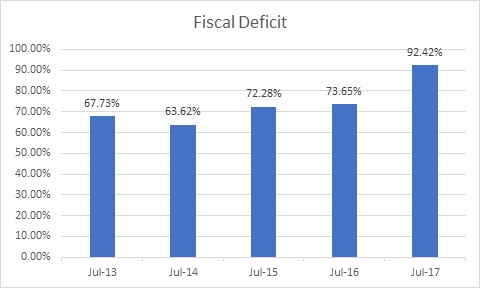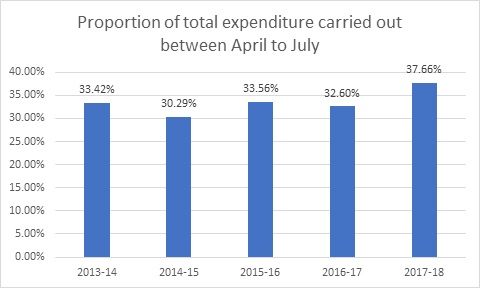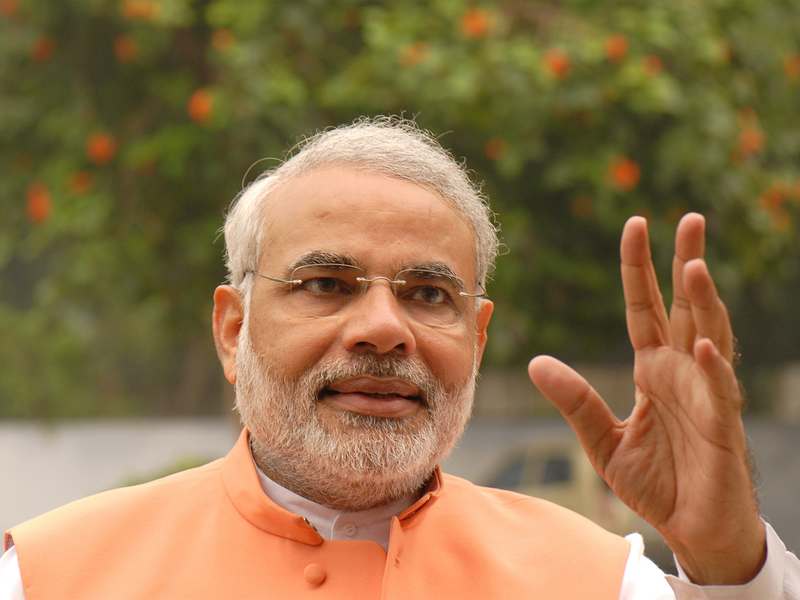Earlier this week, the government released some interesting data on direct taxes which essentially are composed of corporate taxes, personal income tax. They also include tax collected through the income tax amnesty schemes launched by the governments over the years.
How have these taxes done over the years? Has the Narendra Modi government managed to collect more direct taxes than the earlier government’s (as is often said)? The recently released data provides the answers.
Take a look at Figure 1. It basically plots the direct taxes to the GDP ratio over the years.
Figure 1:

Source: http://www.incometaxindia.gov.in/Documents/Direct%20Tax%20Data/Time-Series-Data-2016-17.pdf
What does Figure 1 tell us? It tells us very clearly that the direct taxes collection as a proportion of the GDP, has remained flat over the last few years, including the three years of the Modi government. It also tells us very clearly that whenever a politician talks about the collection of direct taxes (or for that matter any other tax) going up, it should be in the context of the size of the economy (i.e. the GDP).
If that is not the case, then he or she is clearly bluffing or does not understand how taxes are reported. As I said earlier, the direct taxes are comprised of personal income tax, corporate tax and other direct taxes. First and foremost, let’s take a look at how things look if we ignore the other direct taxes. This is important for the year 2016-2017, when the government managed to collect a significant amount of tax, through two income-tax amnesty schemes, one launched before demonetisation, and one after it.
Figure 2:

Source: Author calculations based on data taken from http://www.incometaxindia.gov.in/Documents/Direct%20Tax%20Data/Time-Series-Data-2016-17.pdf
Unlike Figure 1, which curves up at the end, Figure 2 is more flattish, once we adjust for the other direct tax. This matters in a year like 2016-2017, when the government collected Rs 15,624 crore as other direct tax, much of which was collected from income tax amnesty schemes. Once adjusted for this, the direct taxes to GDP ratio in 2016-2017 falls to 5.49 percent. In 2015-2016, it was at 5.46 percent of the GDP. This is much lower than the 6.30 percent achieved in 2007-2008. Hence, the direct taxes to GDP ratio has fallen over the years.
Figure 3:

Source: Author calculations based on data taken from http://www.incometaxindia.gov.in/Documents/Direct%20Tax%20Data/Time-Series-Data-2016-17.pdf
Figure 3 tell us very clearly that corporate income tax to GDP ratio has been falling over the years. It has fallen from a peak of 3.88 percent of the GDP in 2007-2008 to 3.19 percent in 2016-2017. One reason for this has been the slow growth in corporate earnings over the last few years. Finance Minister Arun Jaitley has talked about lowering corporate income tax rates, but that hasn’t really happened. Whether lower taxes lead to higher collections remains to be seen.
Now let’s take a look at Figure 4, which plots to the personal income tax to GDP ratio.
Figure 4:

Source: Author Calculations based on data taken from http://www.incometaxindia.gov.in/Documents/Direct%20Tax%20Data/Time-Series-Data-2016-17.pdf
Figure 4 makes for an interesting reading. While, personal income tax to GDP ratio like the corporate tax to GDP ratio also fell, it has managed to recover over the years. Basically, the loss of income tax from the corporates has been covered by getting individuals to pay more income tax, on the whole. One reason for this lies in the fact that the number of individual assessees have risen at a much faster rate over the years, than the number of corporate assessees. And this jump has basically ensured that the tax collections of the Narendra Modi government have continued to remain flat. They would have fallen otherwise.
The column originally appeared on Firstpost on December 21, 2017.






